Abstract
Thromboxane A2 (TXA2) and prostaglandin H2 (PGH2) may aggregate platelets via a common membrane receptor(s). To further characterize this receptor, binding of the radiolabeled TXA2/PGH2 mimetic [125I]BOP to washed human platelets (WP) was investigated. [125I]BOP was competitively displaced from its platelet binding site by stable TXA2/PGH2 analogues. Competition curves were shallow with Hill coefficients of -0.73 +/- 0.05 (P less than 0.001 different from unity) (90 +/- 1% specific binding). Scatchard plots were curvilinear and most consistent with two binding sites; a high-affinity site with Kd of 234 +/- 103 pM, Bmax of 0.7 +/- 0.3 pM/mg protein (180 +/- 87 sites/WP), and a lower affinity site with Kd of 2.31 +/- 0.86 nM, Bmax of 2.2 +/- 0.3 pM/mg protein (666 +/- 65 sites/WP). [125I]BOP association and dissociation kinetics gave a Kd of 157 pM without evidence of negative cooperativity. The EC50 for I-BOP-induced initial Ca2+ increase was 209 +/- 24 pM, shape change was 263 +/- 65 pM, and aggregation was 4.4 +/- 0.5 nM. Parallel binding studies using the TXA2/PGH2 receptor antagonist [125I]PTA-OH showed a single binding site. The rank order for TXA2/PGH2 analogues to displace [125I]PTA-OH was identical to that for [125I]BOP. These studies indicate that [125I]BOP binds to two distinct sites on human platelets that may represent platelet TXA2/PGH2 receptor subtypes. The close correlation of IC50 values for I-BOP-induced platelet shape change and aggregation with the two Kds for [125I]BOP binding suggests that these platelet responses may be independently mediated by the two putative receptors.
Full text
PDF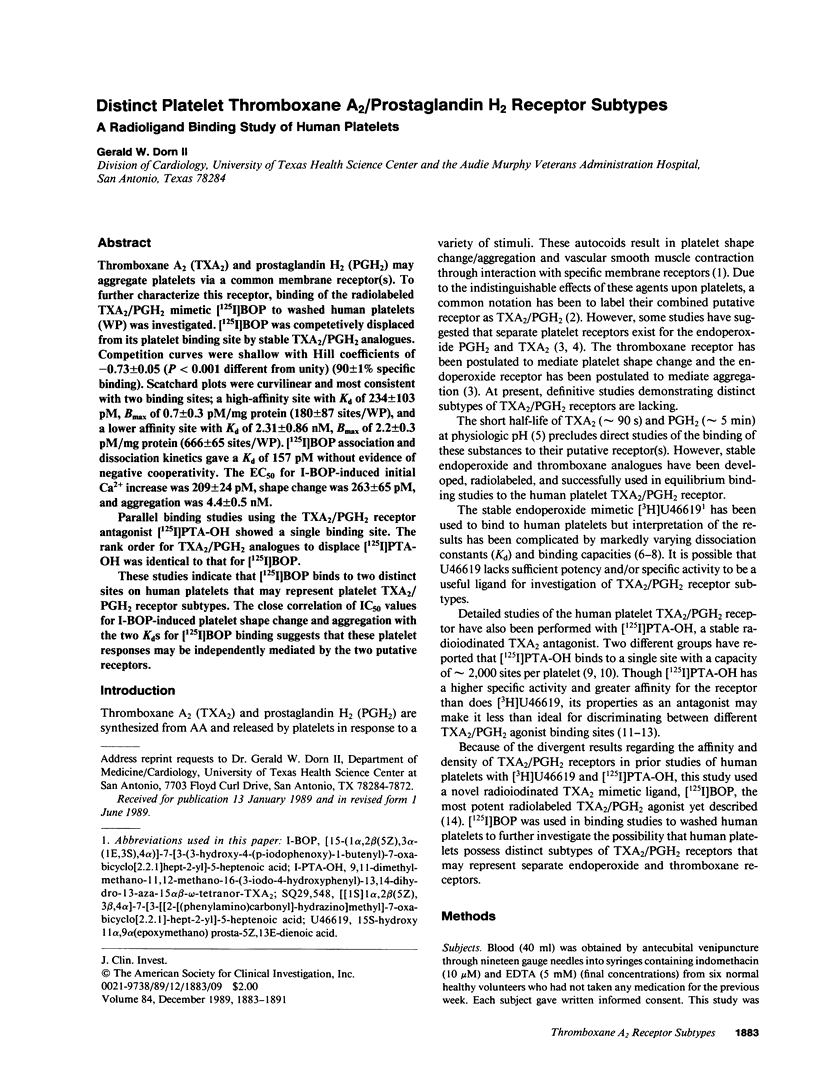
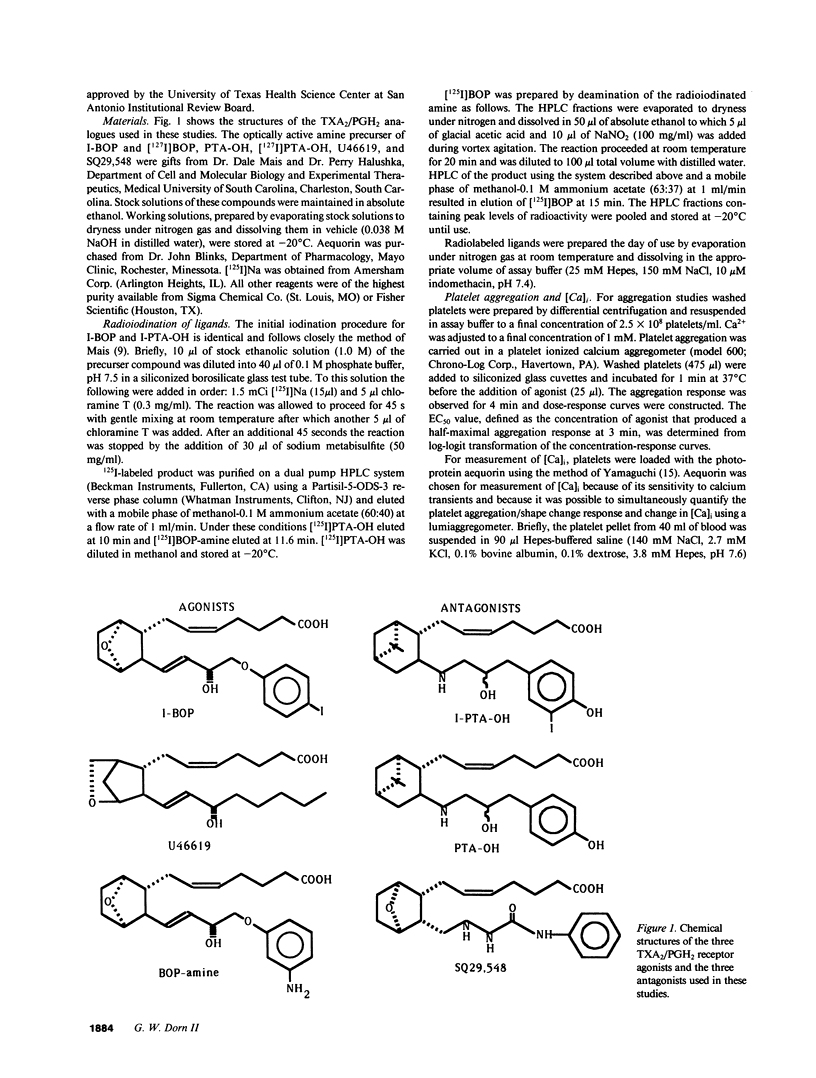
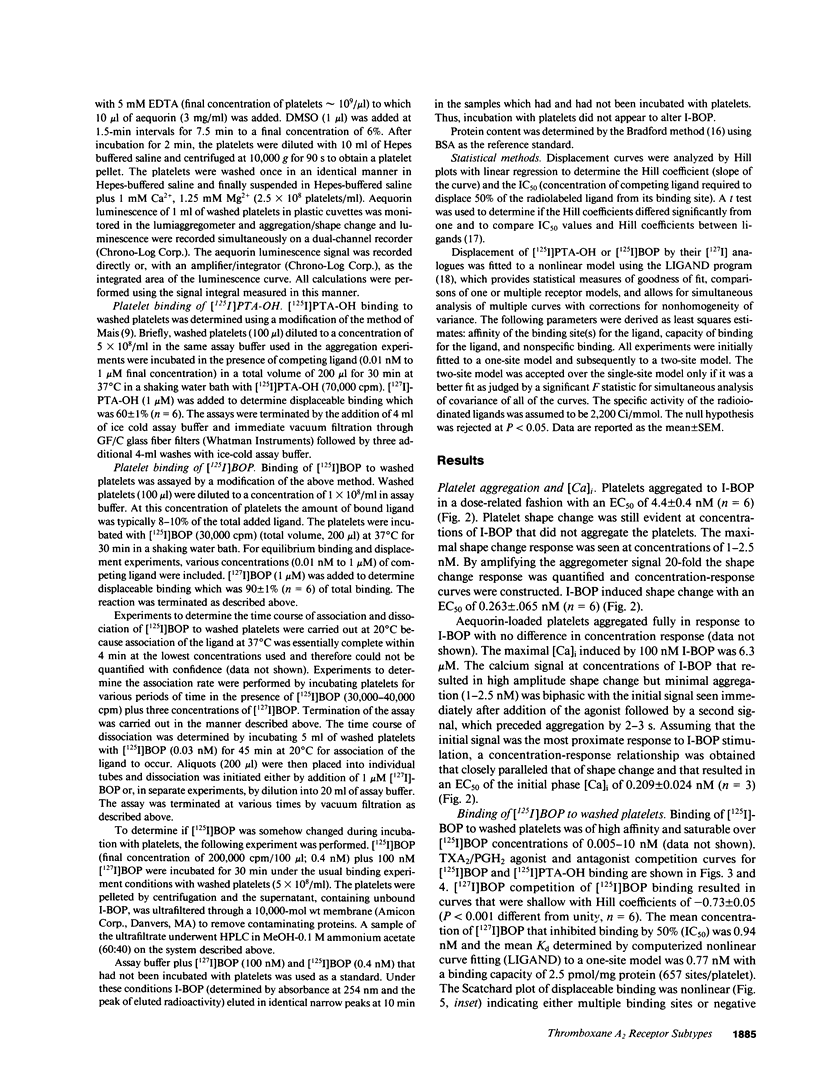
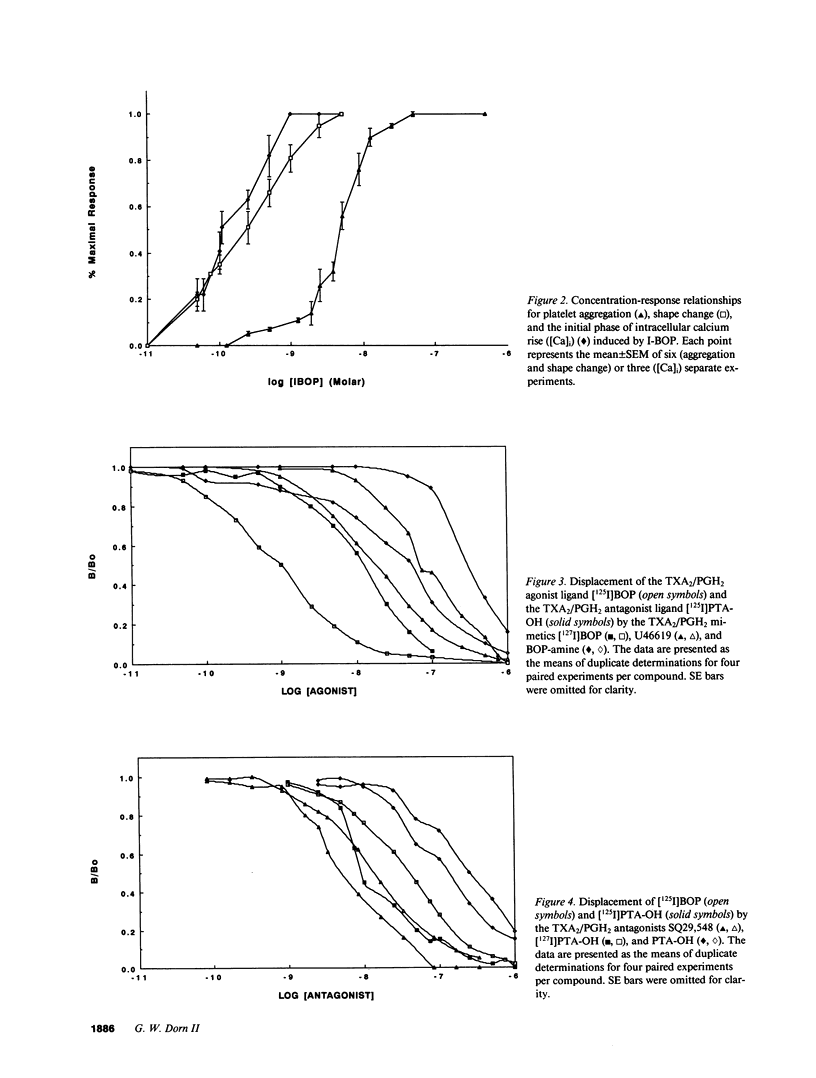
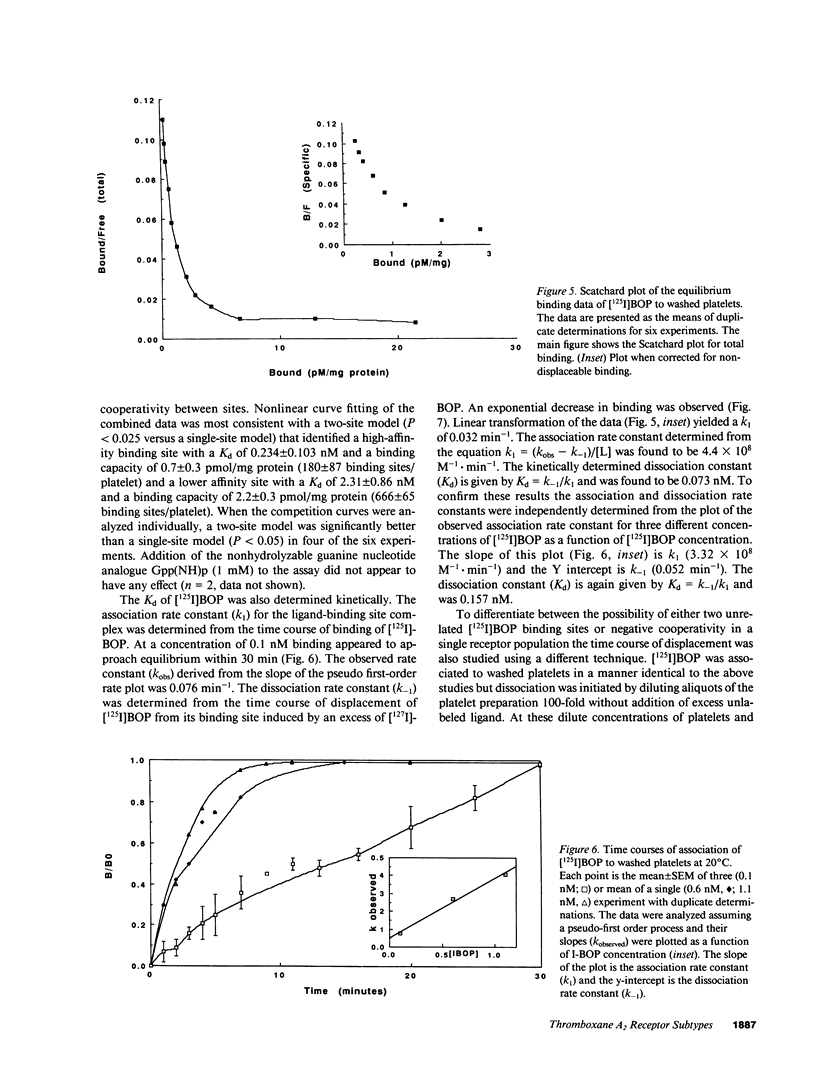
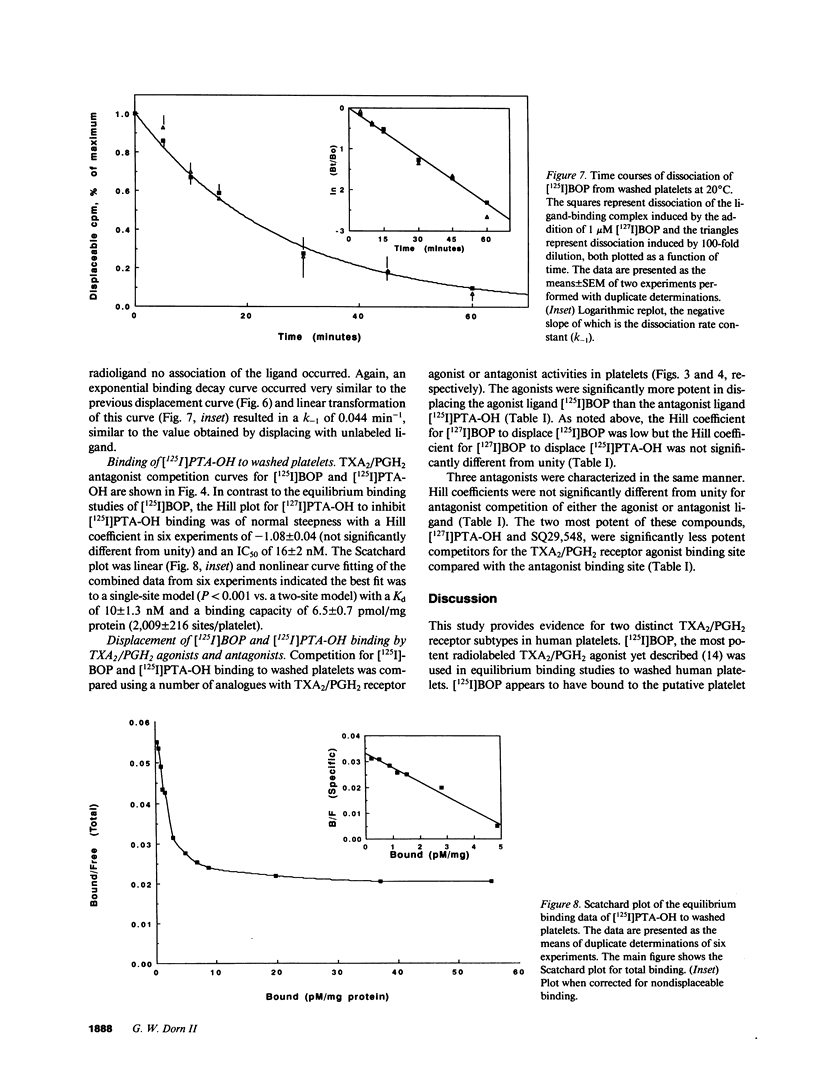
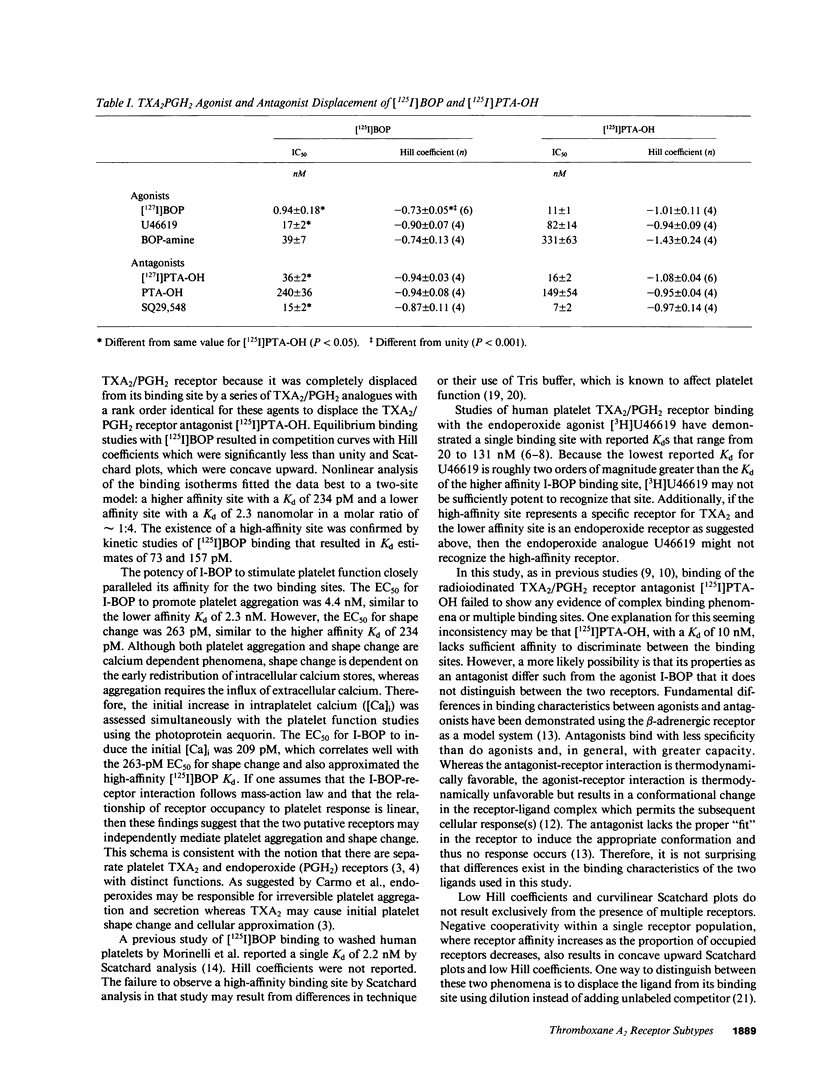
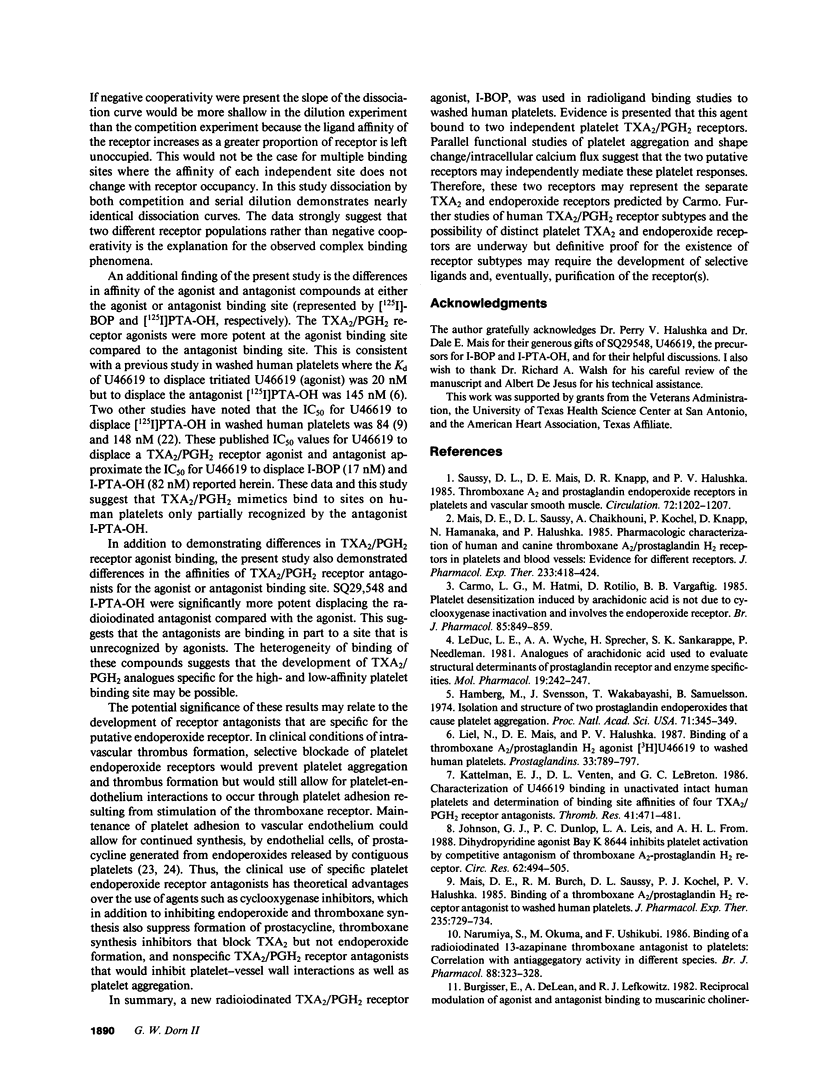
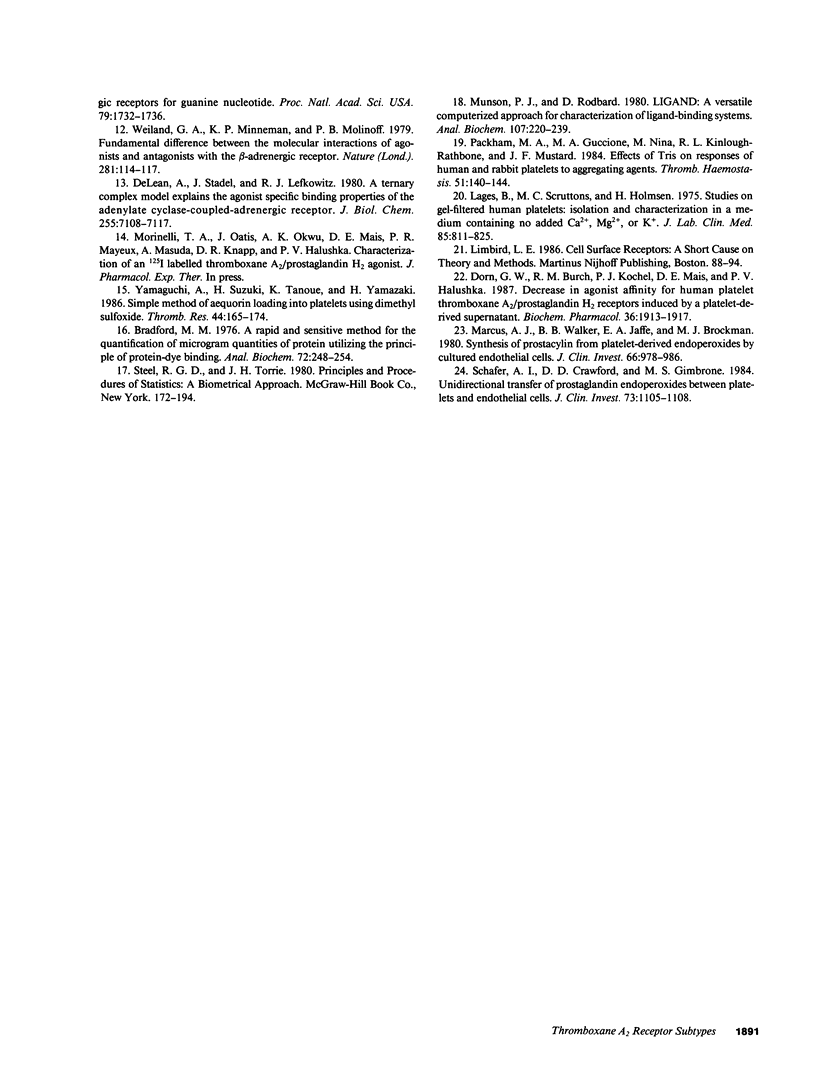
Selected References
These references are in PubMed. This may not be the complete list of references from this article.
- Bradford M. M. A rapid and sensitive method for the quantitation of microgram quantities of protein utilizing the principle of protein-dye binding. Anal Biochem. 1976 May 7;72:248–254. doi: 10.1016/0003-2697(76)90527-3. [DOI] [PubMed] [Google Scholar]
- Burgisser E., De Lean A., Lefkowitz R. J. Reciprocal modulation of agonist and antagonist binding to muscarinic cholinergic receptor by guanine nucleotide. Proc Natl Acad Sci U S A. 1982 Mar;79(6):1732–1736. doi: 10.1073/pnas.79.6.1732. [DOI] [PMC free article] [PubMed] [Google Scholar]
- Carmo L. G., Hatmi M., Rotilio D., Vargaftig B. B. Platelet desensitization induced by arachidonic acid is not due to cyclo-oxygenase inactivation and involves the endoperoxide receptor. Br J Pharmacol. 1985 Aug;85(4):849–859. doi: 10.1111/j.1476-5381.1985.tb11084.x. [DOI] [PMC free article] [PubMed] [Google Scholar]
- De Lean A., Stadel J. M., Lefkowitz R. J. A ternary complex model explains the agonist-specific binding properties of the adenylate cyclase-coupled beta-adrenergic receptor. J Biol Chem. 1980 Aug 10;255(15):7108–7117. [PubMed] [Google Scholar]
- Dorn G. W., 2nd, Burch R. M., Kochel P. J., Mais D. E., Halushka P. V. Decrease in agonist affinity for human platelet thromboxane A2/prostaglandin H2 receptors induced by a platelet-derived supernatant. Biochem Pharmacol. 1987 Jun 15;36(12):1913–1917. doi: 10.1016/0006-2952(87)90488-6. [DOI] [PubMed] [Google Scholar]
- Hamberg M., Svensson J., Wakabayashi T., Samuelsson B. Isolation and structure of two prostaglandin endoperoxides that cause platelet aggregation. Proc Natl Acad Sci U S A. 1974 Feb;71(2):345–349. doi: 10.1073/pnas.71.2.345. [DOI] [PMC free article] [PubMed] [Google Scholar]
- Johnson G. J., Dunlop P. C., Leis L. A., From A. H. Dihydropyridine agonist Bay K 8644 inhibits platelet activation by competitive antagonism of thromboxane A2-prostaglandin H2 receptor. Circ Res. 1988 Mar;62(3):494–505. doi: 10.1161/01.res.62.3.494. [DOI] [PubMed] [Google Scholar]
- Kattelman E. J., Venton D. L., Le Breton G. C. Characterization of U46619 binding in unactivated, intact human platelets and determination of binding site affinities of four TXA2/PGH2 receptor antagonists (13-APA, BM 13.177, ONO 3708 and SQ 29,548). Thromb Res. 1986 Feb 15;41(4):471–481. doi: 10.1016/0049-3848(86)91692-0. [DOI] [PubMed] [Google Scholar]
- Lages B., Scrutton M. C., Holmsen H. Studies on gel-filtered human platelets: isolation and characterization in a medium containing no added Ca2+, Mg2+, or K+. J Lab Clin Med. 1975 May;85(5):811–825. [PubMed] [Google Scholar]
- LeDuc L. E., Wyche A. A., Sprecher H., Sankarappe S. K., Needleman P. Analogues of arachidonic acid used to evaluate structural determinants of prostaglandin receptor and enzyme specificities. Mol Pharmacol. 1981 Mar;19(2):242–247. [PubMed] [Google Scholar]
- Liel N., Mais D. E., Halushka P. V. Binding of a thromboxane A2/prostaglandin H2 agonist [3H]U46619 to washed human platelets. Prostaglandins. 1987 Jun;33(6):789–797. doi: 10.1016/0090-6980(87)90107-9. [DOI] [PubMed] [Google Scholar]
- Mais D. E., Burch R. M., Saussy D. L., Jr, Kochel P. J., Halushka P. V. Binding of a thromboxane A2/prostaglandin H2 receptor antagonist to washed human platelets. J Pharmacol Exp Ther. 1985 Dec;235(3):729–734. [PubMed] [Google Scholar]
- Mais D. E., Saussy D. L., Jr, Chaikhouni A., Kochel P. J., Knapp D. R., Hamanaka N., Halushka P. V. Pharmacologic characterization of human and canine thromboxane A2/prostaglandin H2 receptors in platelets and blood vessels: evidence for different receptors. J Pharmacol Exp Ther. 1985 May;233(2):418–424. [PubMed] [Google Scholar]
- Marcus A. J., Weksler B. B., Jaffe E. A., Broekman M. J. Synthesis of prostacyclin from platelet-derived endoperoxides by cultured human endothelial cells. J Clin Invest. 1980 Nov;66(5):979–986. doi: 10.1172/JCI109967. [DOI] [PMC free article] [PubMed] [Google Scholar]
- Munson P. J., Rodbard D. Ligand: a versatile computerized approach for characterization of ligand-binding systems. Anal Biochem. 1980 Sep 1;107(1):220–239. doi: 10.1016/0003-2697(80)90515-1. [DOI] [PubMed] [Google Scholar]
- Narumiya S., Okuma M., Ushikubi F. Binding of a radioiodinated 13-azapinane thromboxane antagonist to platelets: correlation with antiaggregatory activity in different species. Br J Pharmacol. 1986 Jun;88(2):323–331. doi: 10.1111/j.1476-5381.1986.tb10208.x. [DOI] [PMC free article] [PubMed] [Google Scholar]
- Packham M. A., Guccione M. A., Nina M., Kinlough-Rathbone R. L., Mustard J. F. Effects of tris on responses of human and rabbit platelets to aggregating agents. Thromb Haemost. 1984 Apr 30;51(2):140–144. [PubMed] [Google Scholar]
- Saussy D. L., Jr, Mais D. E., Knapp D. R., Halushka P. V. Thromboxane A2 and prostaglandin endoperoxide receptors in platelets and vascular smooth muscle. Circulation. 1985 Dec;72(6):1202–1207. doi: 10.1161/01.cir.72.6.1202. [DOI] [PubMed] [Google Scholar]
- Schafer A. I., Crawford D. D., Gimbrone M. A., Jr Unidirectional transfer of prostaglandin endoperoxides between platelets and endothelial cells. J Clin Invest. 1984 Apr;73(4):1105–1112. doi: 10.1172/JCI111296. [DOI] [PMC free article] [PubMed] [Google Scholar]
- Weiland G. A., Minneman K. P., Molinoff P. B. Fundamental difference between the molecular interactions of agonists and antagonists with the beta-adrenergic receptor. Nature. 1979 Sep 13;281(5727):114–117. doi: 10.1038/281114a0. [DOI] [PubMed] [Google Scholar]
- Yamaguchi A., Suzuki H., Tanoue K., Yamazaki H. Simple method of aequorin loading into platelets using dimethyl sulfoxide. Thromb Res. 1986 Oct 15;44(2):165–174. doi: 10.1016/0049-3848(86)90132-5. [DOI] [PubMed] [Google Scholar]


